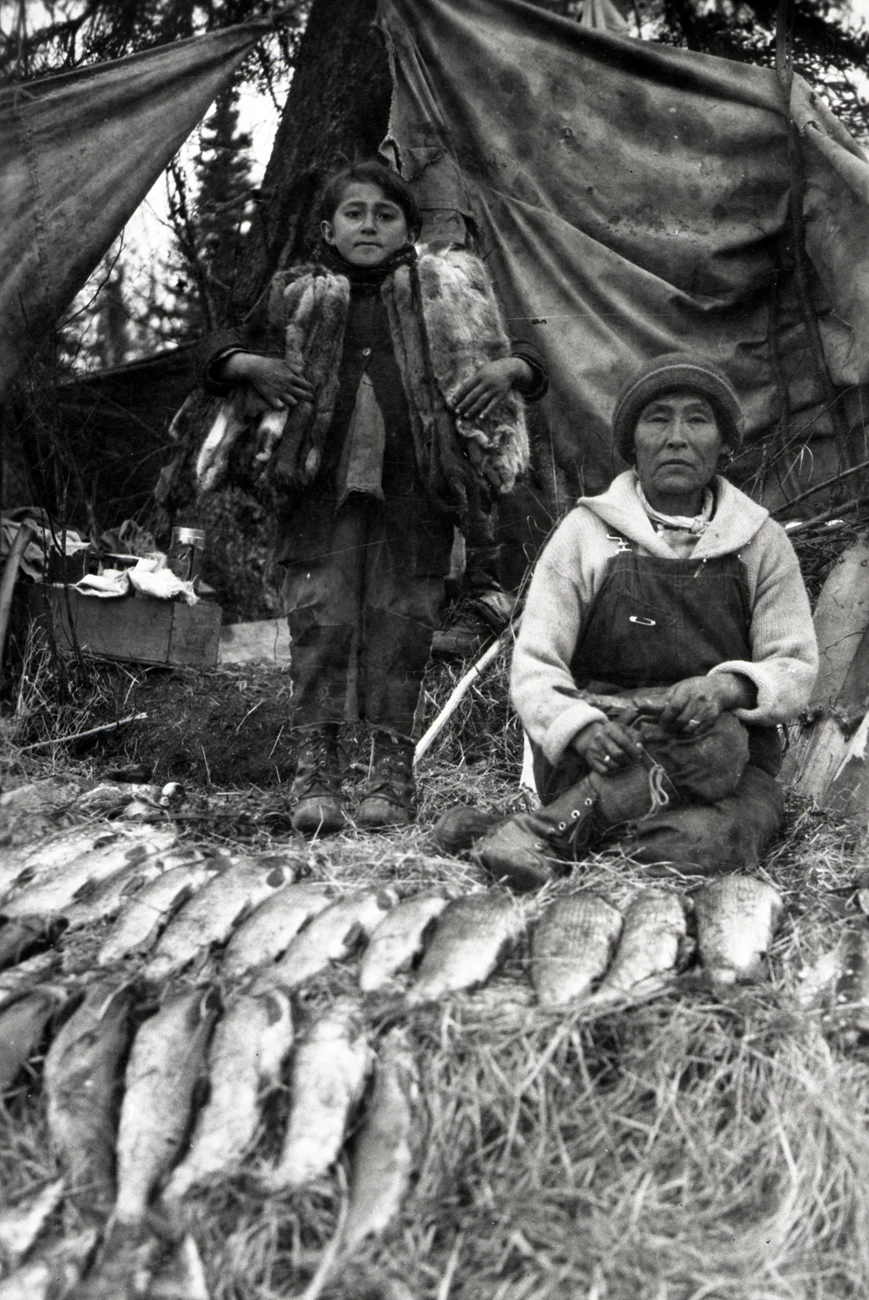Last updated: October 26, 2021
Article
Story of a Photo: A Grateful Heart

Photo courtesy of Agnes Cusma.
Ye’uh qach’dalts’iyli means "what we live on from the outdoors"
This photo (above) of Mary Ann Trefon and her daughter Katie Trefon with their bountiful harvest was taken around 1927. Mary Ann and Katie were at the mouth of Walker’s Slough, off the Chulitna River. In front of Mary Ann are pike and whitefish, and Katie is holding muskrat pelts that will be sold to purchase food and supplies for the winter. The Dena’ina place name for this area is: Hulehga Tahviłq’a, which translates to “whitefish net hole,” a descriptive place name that shows how productive this area is. This photo was taken during Łitlen Nuch’etdeh, or Spring Camp, it embodies the concept of the giving of thanks for the blessing of the harvest. In Dena’ina, Ye’uh qach’dalts’iyli, means ‘what we live on from the outdoors.’ This is how and what the Dena’ina live from; a connection to all living things in the natural world—the outdoors. It is traditional values passed on through generations.K’etniyi "it’s saying something"
The Dena’ina are not only respectful in their interactions with each other, but also in their interactions with the natural world. Their worldview is one of being inseparable from the natural world—humans and animal are equal and everything on the land has a spirit called K’etniyi, ‘it’s saying something.’ Respect is the foundation of their values. According to the elders, if you treat everything and everyone with respect, life will be easier and good things will come back to you. The Dena’ina are keen observers of nature and because of this, they are scientists. Their vast knowledge base, their social and material culture clearly defines their roles as meteorologists, diplomats, artists, architects, linguists, botanists, biologists, midwives and astronomers.The Dena’ina have numerous practices and ways of giving thanks that connect them to the places they live. Acknowledgment of the environment and its gifts of food helped maintain the reciprocal relationship with the land. Olga Balluta from Nondalton explains one way of celebrating and sharing:
“Long ago, the first fish they got, they would have a big potluck and invite mostly all the elderly people. Invite them to eat one little bit, even if they get just a little piece out of the fish they got. And they share that one fish with everybody, that is with the soups and all, pass it to everybody to have a drink out of the cup. That is how they used to do with their first salmon that they catch.” (Lake Clark National Park Subsistence Interviews, 2003)
Over many generations, by understanding and practicing the ancient beliefs and values of their ancestors, the Dena’ina continue to live, learn, and adapt to the many changes and cultural sustainability remains central. The land and water continue to provide physical and spiritual sustenance for the Dena’ina people.
